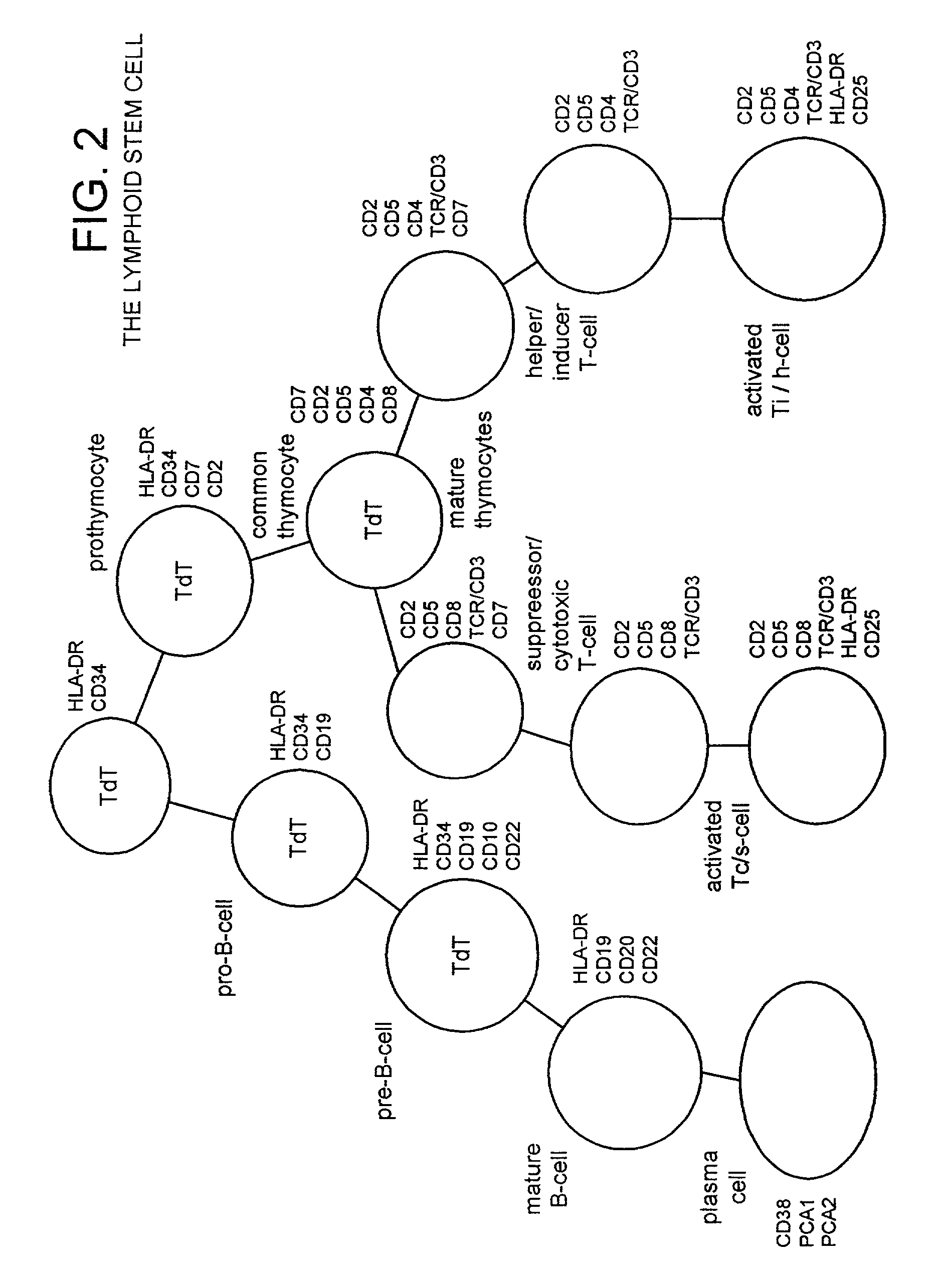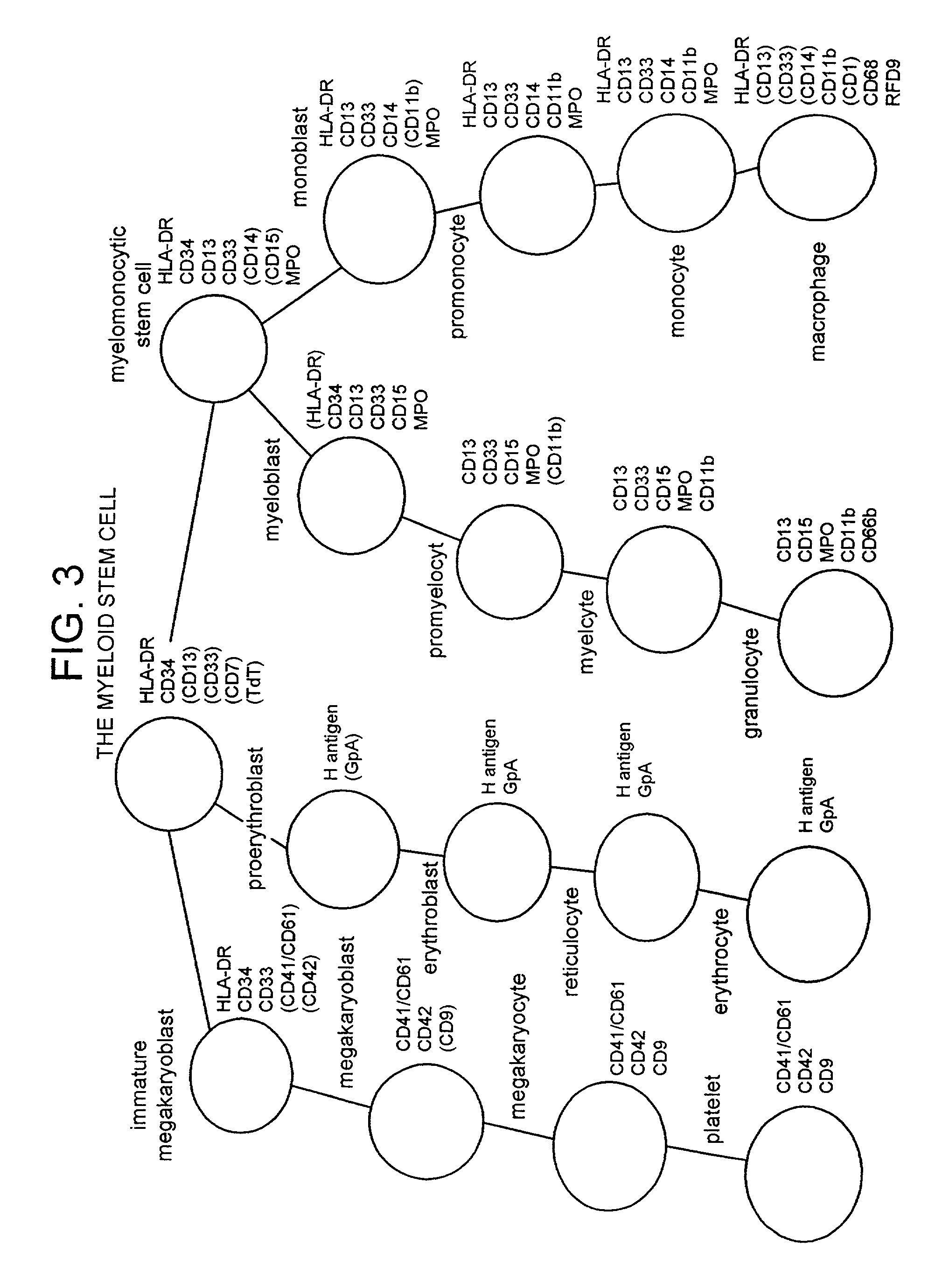Method of preparing an undifferentiated cell
a technology of undifferentiated cells and stem cells, applied in the field of preparation of undifferentiated cells, can solve the problem that stem cells are extremely difficult to obtain from human patients
- Summary
- Abstract
- Description
- Claims
- Application Information
AI Technical Summary
Benefits of technology
Problems solved by technology
Method used
Image
Examples
example
A. Materials and Methods
[0253]Patients Blood samples were obtained in lavender top tubes containing EDTA from patients with B-cell chronic lymphocytic leukaemias, patients with antibody deficiency (including IgA deficiency and X-linked infantile hypogammaglobulinaemias), patients with HIV infections and AIDS syndrome, a patient with CMV infection, a patient with Hodgkin's lymphomas, a patient with acute T-cell leukaemia, a 6-day old baby with blastcytosis, various patients with various infections and clinical conditions, cord blood, bone marrow's, and enriched B-lymphocyte preparations of healthy blood donors.
Clinical and Experimental Conditions
[0254]The clinical and experimental treatment conditions of patients, including various types of treatment applied to their blood samples, are described in Table 1. Differential white blood cell (WBC) counts were obtained using a Coulter Counter and these are included in the same Table.
Treatment of Blood
[0255]Blood samples, once obtained, wer...
example 2
Production of Pluripotent Undifferentiated Stem Cells from Adult Peripheral Blood.
(A) Introduction
[0481]Normally, undifferentiated Totipotent stem cells are not found in circulating blood. Herein, we show that enriched mononuclear fractions obtained from buffy coat of healthy volunteers can be converted into neuronal, cardiac haematopoietic, or endothelial cells as a result of exposing primary cultures to the monoclonal antibody (mab) CR3 / 43. Time-courses during the cell culture procedure showed initially that there was a reversion of a significant proportion of the treated cell population towards the immature phenotype. This was marked by gradual loss of leukocyte-specific antigens such as CD45, CD19, and CD3 with a transient re-expression of the OCT-4, nestin, and CD34 stem cell markers. These events were followed by progressive transdifferentiation of the cultured cells into those having a more mature neuronal phenotype, as marked by an increase in the expression of neuron-specif...
PUM
| Property | Measurement | Unit |
|---|---|---|
| temperature | aaaaa | aaaaa |
| temperature | aaaaa | aaaaa |
| concentration | aaaaa | aaaaa |
Abstract
Description
Claims
Application Information
 Login to View More
Login to View More - R&D
- Intellectual Property
- Life Sciences
- Materials
- Tech Scout
- Unparalleled Data Quality
- Higher Quality Content
- 60% Fewer Hallucinations
Browse by: Latest US Patents, China's latest patents, Technical Efficacy Thesaurus, Application Domain, Technology Topic, Popular Technical Reports.
© 2025 PatSnap. All rights reserved.Legal|Privacy policy|Modern Slavery Act Transparency Statement|Sitemap|About US| Contact US: help@patsnap.com



